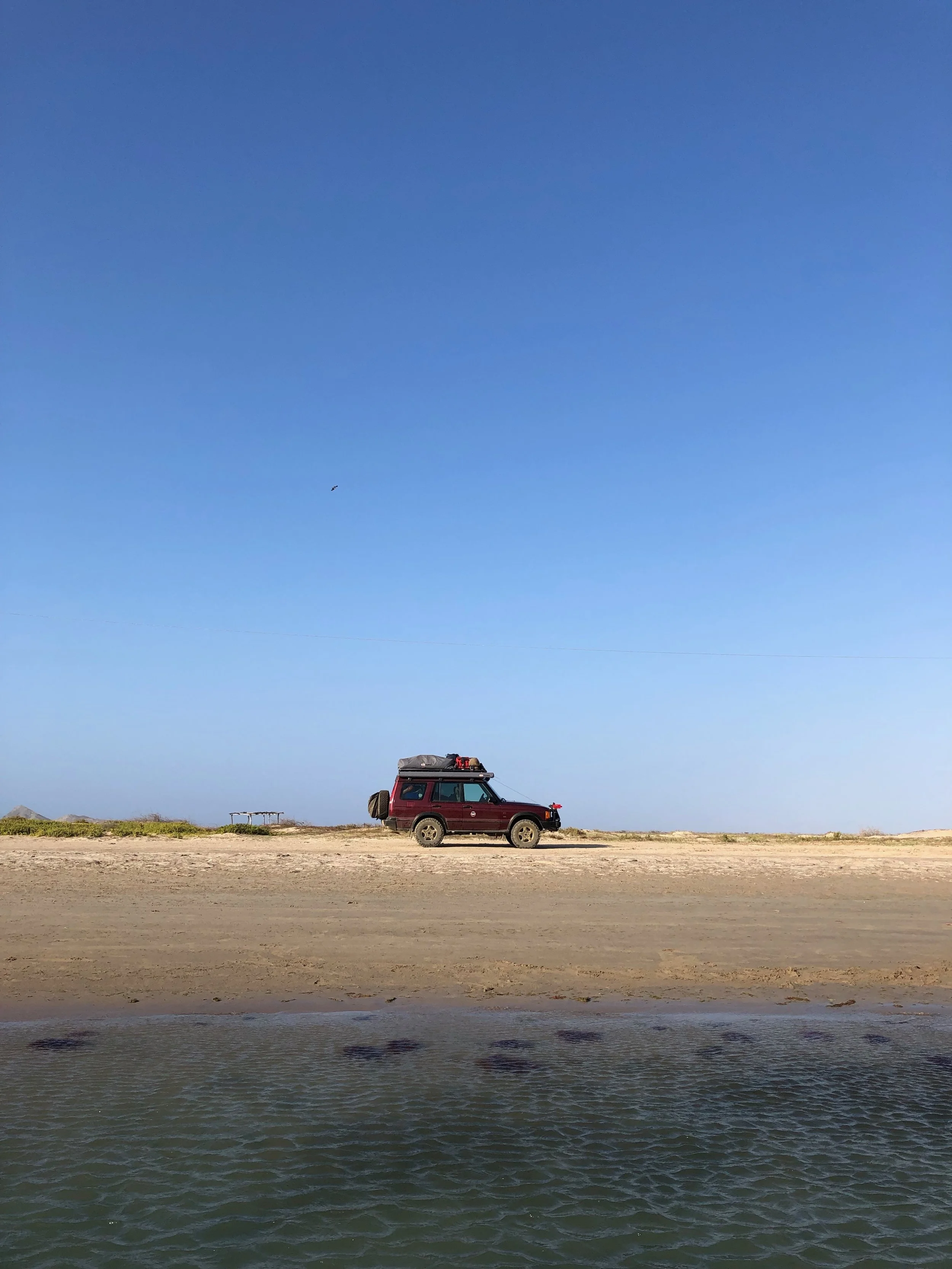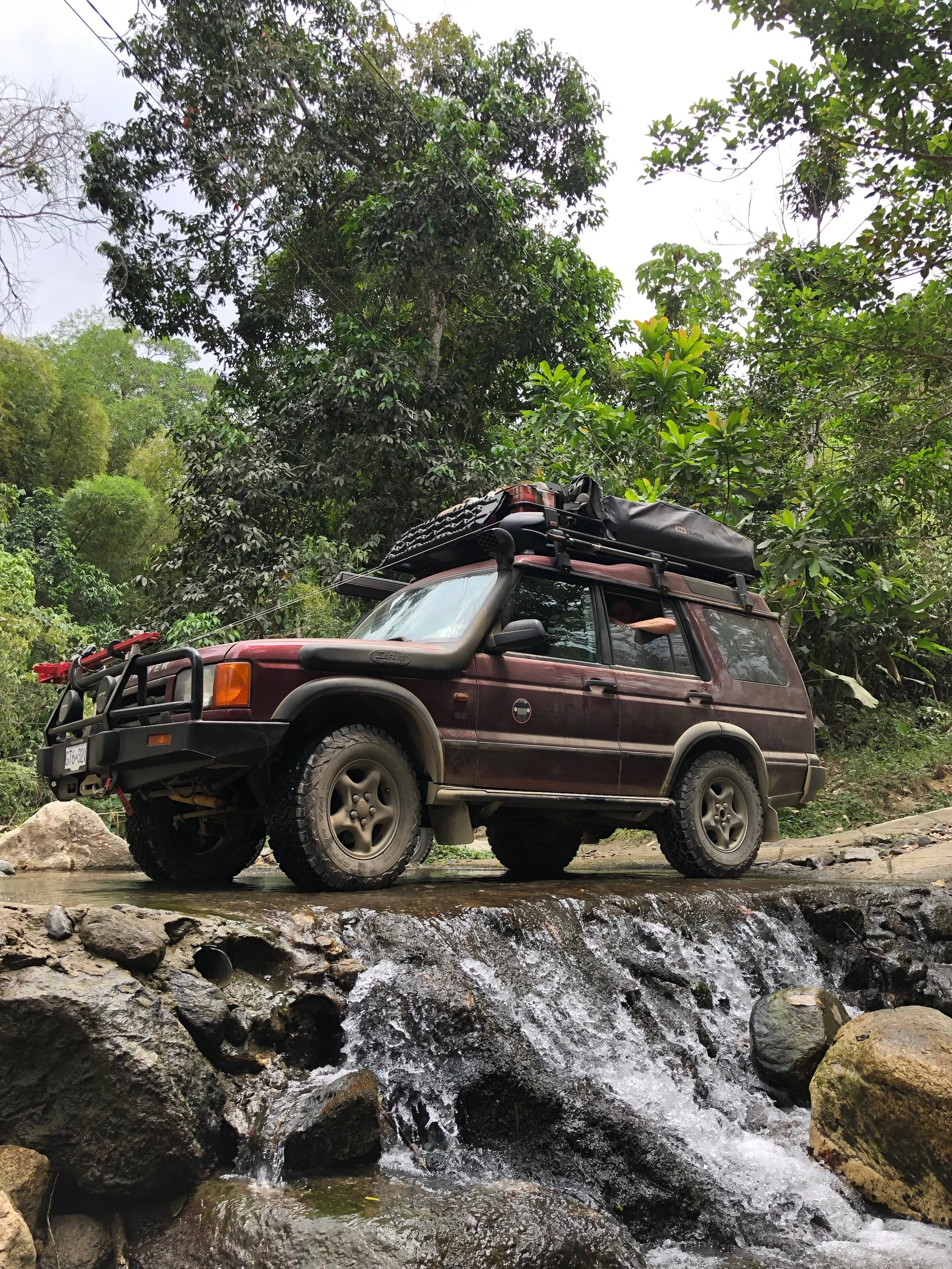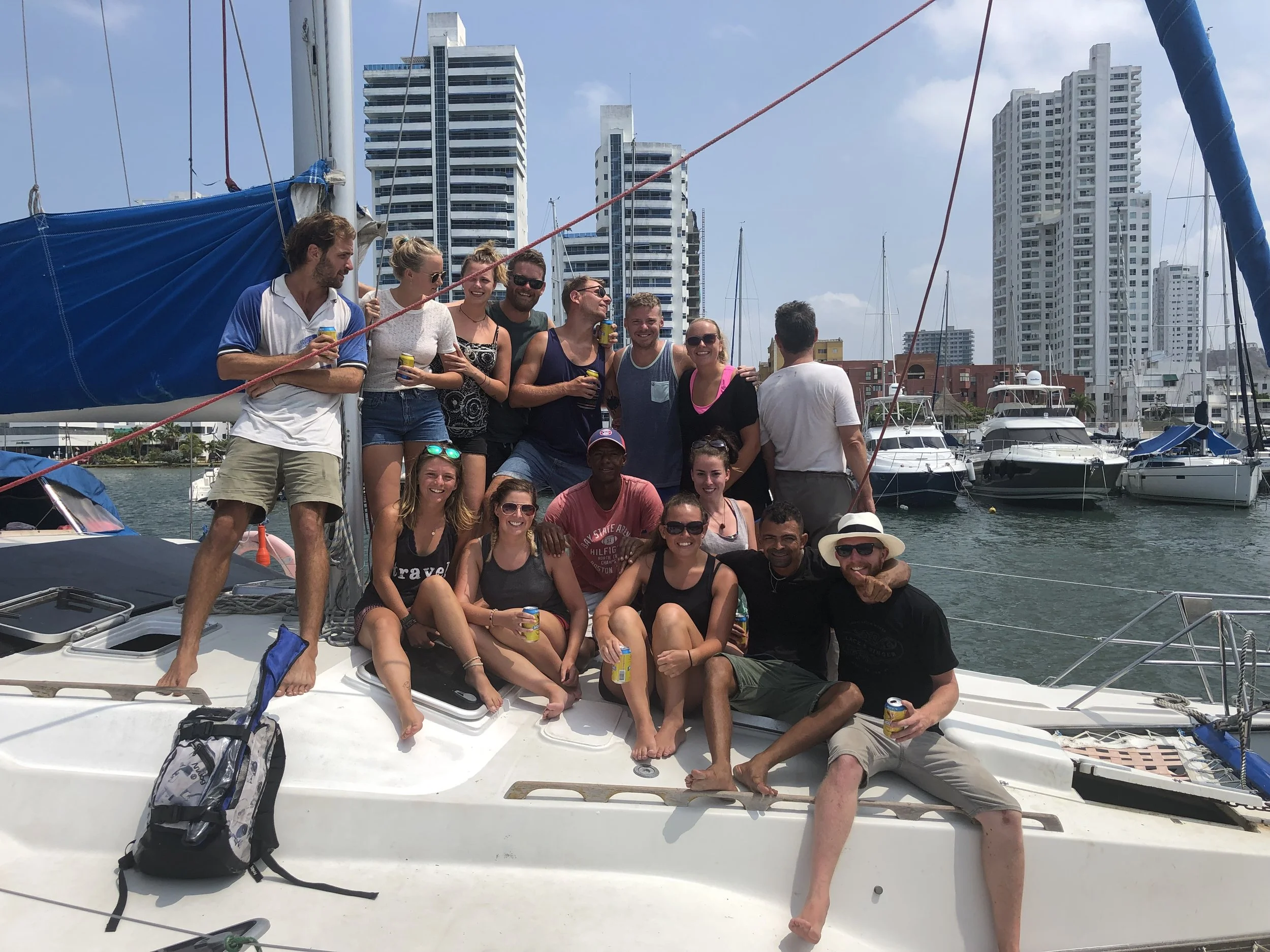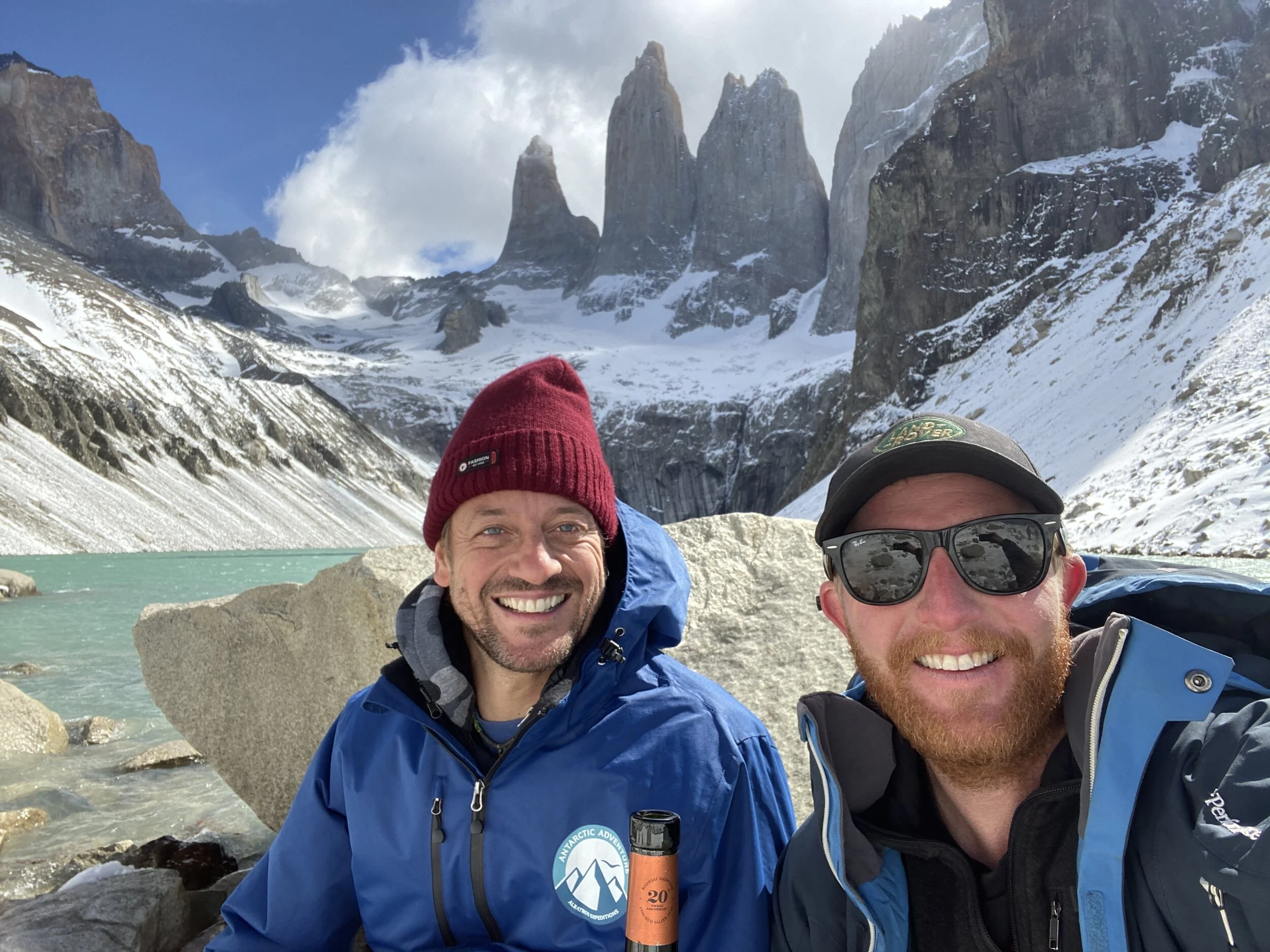Colombian North Coast (Pt 1)
5th March – 3rd April:
Colombia was the 9th country of my overland journey. It also represented a significant change in style from the previous countries. For reasons I’ll get into below, Colombia was the first country I really explored well and took my time. In all, I spent over almost three months there which is just shy of the 90-day tourist visa I was given. I found the country completely captivating from every perspective – it has so much diversity across people, cultures, climates - all things. While I stayed a long time, I could back again and continue to explore and find new and interesting things and places easily (and I will). I find it hard to believe it’s so close to North America but isn’t visited as frequently as it is. If I lived in the US or Canada I believe I would visit Colombia once a year at a minimum.
I think that Colombia suffers from a perception problem due to its problems of the past. It is given an undue negative reputation as a place of drugs and violence. And while not 100% safe I would say that nowhere is, and I encountered no significant issues whatsoever (save for a couple of issues with the police pulling me up on ‘driving infringements’ but I’ve experienced them consistently through Central America). Without pretending to be an expert in Colombian history, it would seem to me that President Uribe’s 2002 police and military offensive to clean up the communist militias from the dangerous Medellin suburb of Comuna 13 represented a significant turning point and symbolic show of intolerance to the countries previous problems with guerillas and the drug trade. Having spent almost three straight months exploring the country extensively, I never came across what I felt was an unsafe area (maybe with the exception of Santa Fe, a borough and ‘tolerance zone’ in Bogota where prostitution is allowed and not a place I would like to be after dark).
Given the duration of my time in Colombia, I will have to break up the blog into three segments. This first one represents approximately the month mostly traveling up and down the northern coast. It starts in Cartagena where my car and I arrived by sea and covers my travels up the coast though Baranquilla, Santa Marta, Taganga, Palomino, Riohacha and up the (almost) northern most point of the South American continent, almost to the Venezuelan border in Cabo de la Vela. The segment concludes with the journey south via Bucaramanga, San Gil and Villa de Leyva before arriving in Bogota.
Traditional Colombian dress in the old town of Cartagena
Cartagena:
As I talked about in a previous post, Cartagena was my entry point to Colombia as it was both the destination of the container ship and my sail boat that delivered my car and I respectively to the shores of a country I had long wanted to visit. I’ve covered the arduous shipping process previously so I’ll avoid it here for the most part. But as a backdrop to my time in Cartagena, I was essentially living a double life – the mornings of going to the port and dealing with the importation process and the tourist / traveller / backpacker / party life with my friends in the afternoons and evenings
A positive aspect to the time in Cartagena was the very large number of friends and people I knew there. Firstly, one of my best mates Norman joined me from the Cayman Islands for the best part of a week. He’s a long-time friend and we’ve travelled many places together before (across Europe & Asia for almost a year, a World Cup in Brazil, a debaucherous few days in New Orleans among others). I also had the people from the San Blas sailing trip across – so 12 passengers and three crew in all of which I actively hung out with more than half of them after the boat docked in harbour. And finally there were the many ‘container buddies’ and those whose vehicles were traveling on the same ship as mine. And that’s not to mention the many people I met in my time there. The result was a lot of friends to enjoy the various sights and parties of Cartagena with.
On the wall of the citadel at Cafe Del Mar on the day Norman arrived
Jessie, Fab, Toon and Angie: my friends from the San Blas sailing trip
The ‘Confused Shippers’, as we tried to navigate the convoluted shipping process. Confused Shippers was also the name of our WhatsApp group we used to communicate (much to the chagrin of our shipping agent who was included on the thread and had to trawl through our banter and answer all of our stupid questions)
Cartagena is a beautiful ocean-side city on the north coast of Colombia. Having said that, while we enjoyed the views of the harbour and the ocean, we never got close to a beach in our time there. The city is a playground for Colombia’s elite with many luxury boats filling the harbours. It’s also a place known for its nightlife and parties. By evenings, the streets and plazas of Getsemani are filled with performers, street food vendors and kids selling beers. Street drinking is the norm and there’s no shortage of restaurants and bars. The old town with the citadel is beautiful and maintains its heritage to when it was established as an important port city in the 1500’s.
Getsemani by night
The centre of the old town on our walking tour of Cartagena
Sun setting between the centuries old buildings and down over the ocean in Cartagena
Many evenings were spent in Trinidad Plaza, a lively night spot in the middle of Getsemani – a suburb of Cartagena favoured by tourists and travellers as a place to eat, drink and enjoy the energy of city. There were freestyle rappers (which got really tiring after a while), Michael Jackson impersonators, break dancers and many other performers to keep the nights there interesting.
In Trinidad Plaza, we met a young Venezuelan guy who would always find us just in time when our beers were running low to make sure our thirst was quenched. We did our best to give him all of our business. One day to show our appreciation, we bought him a beer and asked him to drink one with us. The police immediately grabbed him and pulled him to the side of the plaza with probably six or more police surrounding him. We did our best to see if he was ok but lost track of him and then didn’t see him again for a few days. Each evening we would go to try to find him and see if he got in serious trouble and it was only on the third day we eventually saw him again. He got a fine and had to lay low for a while but ultimately was allowed back to the plaza to work.
We became somewhat friends and he told us about his troubles as a Venezuelan refugee, having to flee the country and his mother having to sneak back across the border for much needed surgery which she couldn’t afford in Colombia. While somewhat more difficult in Spanish, he relayed stories and showed us photos of the troubles back in Venezuela; the food shortages, the hospitals in disrepair, the public disorder and the corruption. It was my first of many encounters with a Venezuelan suffering under the current Maduro regime. The sheer number of people that have fled the country to Colombia and Ecuador (where I have travelled to date) is staggering. They sell things at traffic lights, beg, take on menial jobs when they can get them and often times turn to prostitution and crime because of their impossible circumstances. I was aware of the crisis in Venezuela from when I was in Australia through the news but seeing it first-hand in South America is completely different story. I sincerely hope things change soon and the country can begin to repair the immense damage that has been done in the past few years.
A street dog enjoying Trinidad Plaza alongside the tourists and travellers
Trinidad Plaza: no shortage of beer, street food and entertainment
Our Venezuelan beer vender who we got in trouble with the police
Norm and Carina outside our favourite place for a cheeky cocktail in Getsemani
Many evenings we’d go back to hang out with the crew from the sail boat – the Nacar 2. Gonzalo, Carmelo and Luis were always happy to see us and it served as a great spot for having some early evening beers before the night got underway. There was always someone new hanging out when we went down and it was good to be around people who knew the city.
Gonzalo, his girlfriend, his friend and his cat showing Norm and I some hospitality on the boat
A night out with the Argentineans
As time wore on and the ports continued to hold my car hostage, my friends there began to scatter – most headed north up the coast. At a loss for something to do one evening, I followed some locals to a ‘techno party’. What I didn’t know at the time was the club – Nexus – is in one of the more dangerous neighbourhoods and indeed the club itself doesn’t have a great reputation. Ignorant to all this I was enjoying my night there until the only other gringo at the club came up to me and told me that he’d run out of money and he was going to have some real problems with the club if he couldn’t settle his tab. I gave him what he needed – probably $30 or $40 and took his details from him. We’d later become friends and would cross paths again in Bogota. He told me a few days later that a European guy was murdered at that club exactly a week before we were there for the very same thing – although I suspect his tab was a little higher than $40.
Maybe not one of my smartest decisions. Followed these two to Nexus night club in a bad part of town
My Scottish friend Danny who I saved from potentially being murdered. Well… maybe not murdered but certainly got him out of a bad situation
Finally, my car was released and it was time to catch up with my friends. I stayed one last night with the plan to leave early the next day. It wasn’t to be without one more hiccup. Turning out of the parking lot at 6am, I crossed the street at an angle to avoid the median strip in the middle, heading a handful of metres down the wrong side of the street but figuring it wouldn’t be an issue without a car in sight. Somehow a policeman saw this and waived me down. He tried to insist I pay 750,000 COP or $250 ‘multa’ (fine) for my ‘contra via’ (going the wrong way down the street). I’d now learned to keep pockets of money aside for these circumstances and handed him some USD (much less than $250) claiming it was all I had. He thanked me and promptly started giving me directions to Santa Marta. It’s funny how every cop becomes your best friend the minute you’ve paid them.
Most of these people are hanging out for their street food - arepas - which I suppose I would describe as a thick Colombian tortilla
Apparently it was lucky to touch this Botero sculpture so I jumped right in
Jessie and Angie - ‘Double Dutch’
Finally got my car out and was ready to hit the road again
A Big Decision
When I left Cartagena, I headed straight for Minca where my friends the Barnsleys and the French couple Sylvain and Marjorie were staying. It felt so good to be back on the road again. It’s crazy how much I miss driving when it’s taking away from me. As I write this, my car has been in various shops in Ecuador for over a month now getting a large number of improvements done. As I do now, I then felt a burning desire to get behind the wheel and have my home, my possessions and my freedom back.
Minca is a quiet little town in the jungle almost five hours drive from Cartagena – passed Barranquilla and near to Santa Marta. Having just missed out on the Carnival in Barranquilla, it seemed logical to skip past it, and so Minca seemed the next logical place to head. The others had found a quiet spot in a mountainous area outside of the town where they could park and we could all go back to sleeping in our cars, vans or roof top tents as we all preferred. The serenity of Minca was the perfect place to pull out the map of Colombia and sketch out our respective routes through.
Drone shot of our Minca accommodation, nestled in the jungle a few kilometres form the town
First time I’d pulled out the paper maps I’d been carrying for each country. The three groups scrounged insights and tips from friends and the internet and began planning our respective routes
My Discovery 2, the Barnsley’s fully-kitted out Defender 130 and Sylvain & Marjorie’s overland-converted VW T5
With the minor timing blowout in Cartagena, I started to plan the next few months of travel – how I would get through Colombia, through Peru and Bolivia, and how I would get to Santiago (Chile) to meet my family for the trip south through Patagonia to Ushuai. The plan was initially to get to the bottom of the continent before the winter set in. Beating the winter meant rushing and still hitting Usuhuai at the bottom of the continent in the cold season of May / June which could be more dangerous and not as fun (with family on board). Going on the far side of winter meant completely changing the timing of my plans and adding probably three to six months plus to my plan.
I put together the detail of both plans and initially settled for the shorter trip and pushing through. However, thankfully I was in good company and when I bounced this off my fellow overlanders; they were critical of the rushed plan and how much I would be able to enjoy the trip going covering so many kilometres in such a short space of time. On the other hand, there was a big difference between a 6 and 12-month trip and all of the implications of making such a drastic addition to the time of it. I had to consider the money, what I meant for the businesses I’d left behind in Australia and opportunities I’d lined up that would fall by the wayside if I pushed it out.
There was probably 24 hours of vacillating back and forth on this and considering all the repercussions of a decision to extend versus an adventure not enjoyed to its fullest. I spoke to my overlander friends there, my family and friends back home. I was surprised at how supportive they all were of my keeping going (why I’m surprised by this in retrospect, I’m not sure?). The simple questions that were posed to me were: ‘Can you do it?’ and ‘do you want to do it’. Boiled down that way, it seemed clear and the decision was made.
It would mean having to make some major changes to the way I spent money, the nights spent sleeping in the tent versus in hotels or hostels, going slower to reduce the significant cost of fuel during ($100 or more on a long days drive), spending more time in the country and avoiding big cities (where costs were typically higher and it was easier to spend money), cooking more instead of restaurants and figuring out how to stem the bleed from costs I was still incurring back home where my life was on hold for me but not completely packed up.
It would also mean having to derive income while on the road. With links back to several businesses at home in Australia, I figured this was a solvable problem which I would then have to tackle next. The challenge I put to myself was to reach a goal of financial equilibrium – a situation where I was earning on the road and in a position to effectively travel indefinitely (or at least as long as the journey was bringing me joy and I wanted it to continue).
After making this decision, I had a renewed sense of freedom. I was Liberated. On top of the world. I could truly do what I wanted - follow strangers to weird and wonderful places, take more time for myself, solidify my Spanish. This was a real turning point of my adventure. I hadn’t solved all the problems of making it a reality yet but I was prepared to. The result was that I was starting South America with nine months ahead of me instead of three. It was a huge difference and entirely changed the nature of the journey. I had a completely new mentality beginning this leg of the trip.
I send my profound gratitude to Jamie, Sylvain, Angela and Marjorie who were there while I was making this decision. I was teetering on the edge of cutting the trip of a lifetime short and they nudged me in the right direction.
Container buddies united. The Barnsley’s (Jamie, Angela, Lily & Spencer), Sylvain, Marjorie and I
Taking stock, comparing notes and kicking back with my overlander friends
The sun setting on our quiet jungle oasis
After several days in Minca, everyone was ready to get back on the road. This was not in small part to the sand flies that were eating everyone alive despite generous application of high concentration insect repellant. As it happens, two French backpackers were staying at the accommodation with us and they seemed like good people. So as my overlander friends headed in different directions, I exercised my new-found freedom and asked the backpackers where they were going and if they wanted a lift there. And thus started a new chapter of wandering unconstrained through Colombia.
Margot and Rafael: The next phase of my adventure would be to head up the coast with these two. Both are amazing people. My time with Rafael was relatively short-lived but Margot and I traveled further and she became a close friend and part of my stories to come































